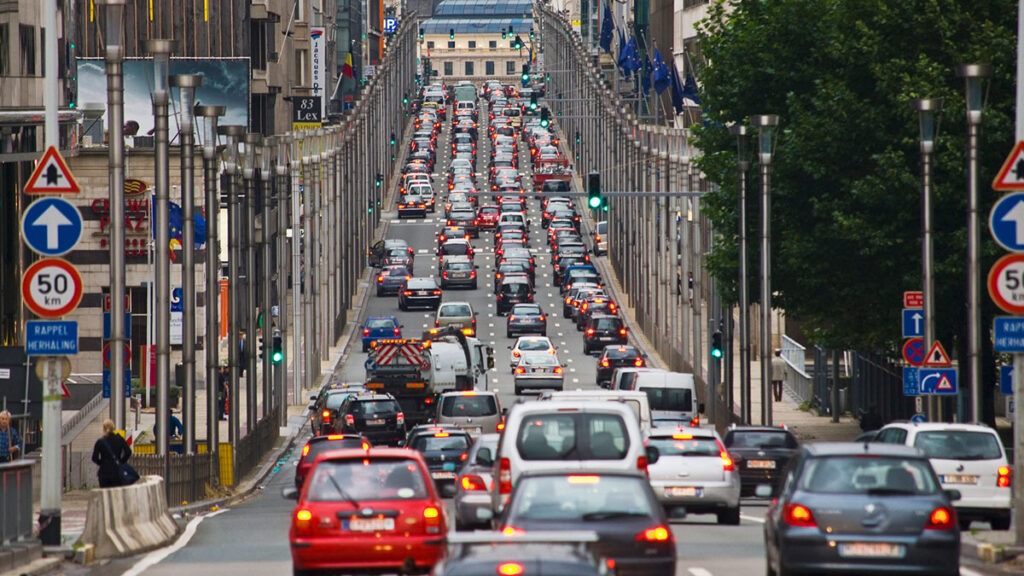Urbanisation is the focus today at COP28. Transport is a big feature of urban life, and it produces 20% of global CO2 emissions, and 34% of the UK’s greenhouse gas (GHG) emissions. The UK has made significant progress in reducing emissions, but transport is rapidly becoming an outlier in the UK story, alongside residential property. All that set against increasing urgency to cut GHG emissions radically.
With transport, we needn’t argue over ‘abated’ use of fossil fuels; carbon capture and storage aren’t going to work on tailpipe emissions. So the solutions are a reduction in vehicle miles, or in emissions per vehicle mile, or a combination of the two.
Public transport has a vital part to play, and we’ve seen some encouraging UK statistics. The star is the Elizabeth Line, now carrying over one sixth of all UK rail journeys. Elsewhere, it’s recovery rather than records; London Underground hit four million passengers in a day (but the pre-pandemic record was five million); and annual UK bus journeys are up 19.3% to 3.4 billion. But against that, Addison Lee – one of London’s main private hire providers – admitted it cannot hit its stated ambition of an all-electric fleet this year, citing a combination of slow roll-out of charging facilities and limited range of vehicle models.
There is no low hanging fruit, but with the average life of a car at around 10 years in the UK (12 in the EU) and virtually no bus surviving more than 20 years, a complete refresh of the UK’s current road vehicle stock will have happened well before 2050. Railway rolling stock is much longer lived.
The efficiency of buses and two-wheelers in using road space, as against the car, has been regularly illustrated – by London Transport in a 1970s poster, by photoshoots in Munster in the 1990s and Canberra in 2012, and in a graphic used by the Campaign for Better Transport in their 2019 publication The Future of the Bus.
As well as the GHG issue, this is of course also a big issue for air quality, congestion, access to healthcare, work and education. Cities are efficient places to live and work, but there are vast differences in just how well they play that role, and relatively few major factors make a huge difference. Efficient land use is one, and transport plays its part here: across Los Angeles, an area of land the size of Manhattan is used for open-to-air car parking – dead space for any other use.
Modifying public behaviour to use public transport over private is a difficult art, but buses are very much more nimble here than rail, because they can be deployed so rapidly. In 1941 George Dow proposed two new cross-London rail connections: Thameslink opened 49 years later, in 1990; Crossrail not until 2022. London’s Superloop orbital bus network brand was a concept proposed in 2008 by London’s Mayor, revived in the 2018 Transport Strategy and delivered in 2023.
Innumerable individual decisions will make the difference, as will the level of influence that governments have, or choose to seek, over those decisions. The UK is not alone here – and in a year of general elections in countries that are home to more than half the world’s population, that is a big issue.
Individual responsibility and understanding play a part, and interestingly Transport for London has put 700 of its staff through carbon literacy training, with a target of 3,000 more this year, in its commitment to a Zero Carbon London by 2030.
My Gowling WLG colleagues can be rightly proud of what they are doing in this sector: on EV charging rollout; the hydrogen economy; bus opportunity charging, and micro mobility projects which have delivered cycle and e-bike hire schemes, and the city’s e-scooter trial. Find out more about our infrastructure projects practice and read the ‘Decarbonising transport, let’s get moving together‘ report that we contributed to this spring.
It is handy to avoid the question of who is ‘designated driver’ for a night out, and real-time information has made public transport much easier to use, but it can still be inconvenient to have to wait for the bus, or leave for the last train – but not half as inconvenient as having your house destroyed by a wildfire or flood, or running out of food, which are ultimately the choices we are facing as a species.
Our ESG team is closely following developments at COP28 and the broad range of issues being discussed – from finance, trade and energy, to youth/education, nature and land use.
Read our previous blog on the importance of gender equality in driving climate solutions to find out more about this year’s summit and key themes

